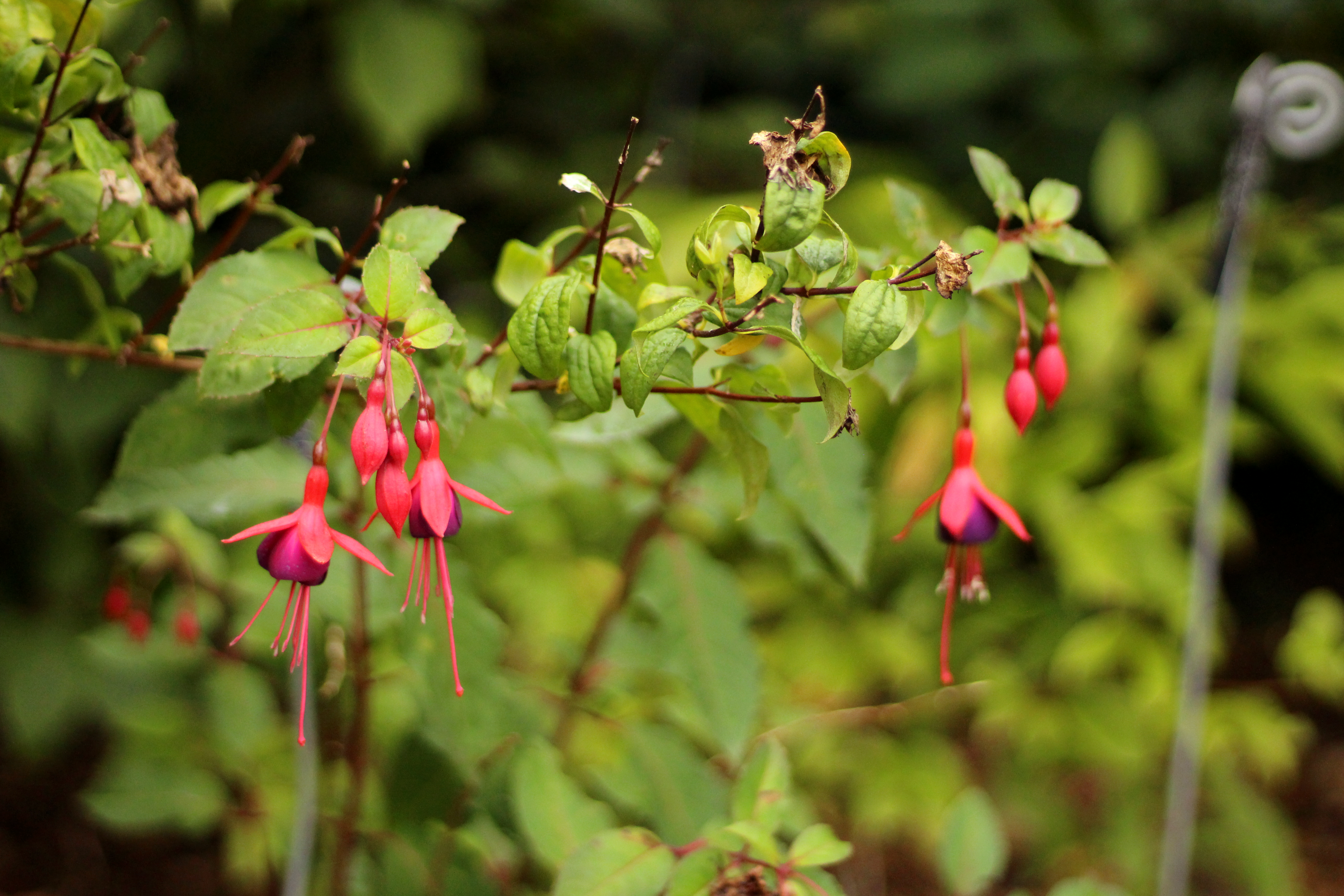Fuchsia 'Mrs Popple'
Approx. 0.5 litre pot
About this cultivar:
Fuchsia 'Mrs Popple' is an 1899 introduction from Elliott and it is still popular over 100 years later! It is a vigorous upright shrub with small, dark green leaves. Flowers single, with bright red sepals and tube and violet-purple petals. It has the Royal Horticultural Society Award of Garden Merit (RHS AGM).
Val Bourne writes about its discovery in the Daily Telegraph:
"spotted by Clarence Elliott of The Six Hills Nursery, in Stevenage. Clarence was attending a tennis party held by his neighbour Mrs Popple when he noticed the simple purple and red single-flowered fuchsia growing by the court.
A conversation with his hostess revealed that this fuchsia had been growing outside for decades. Elliott collected cuttings in the summer of 1899 (one of the sunniest on record) and 'Mrs Popple' remains the best hardy fuchsia for a hedge."
- Position: Full sun, partial shade
- Soil: Almost any soil
- Flowers: July, August, September, October
- Other features: Royal Horticultural Society Award of Garden Merit (RHS AGM), Bees and Butterflies
- Hardiness: H4 - Hardy through most of the UK (-10 to -5°C)
- Habit: Clump forming, bushy
- Foliage: Deciduous
- Height: 60 - 90 cm (2 - 3 ft)
- Spread: 60 - 90 cm (2 - 3 ft)
- Time to full growth: 2 to 5 years
- Plant type: Herbaceous Perennial, shrub
- Colour: Green, red, purple
- Goes well with: Everything!
About this genus:
Fuchsia (few-che-a) is a genus of flowering plants that consists mostly of shrubs or small trees. There are over 110 recognized species. The first, Fuchsia triphylla, was discovered on the Caribbean island of Hispaniola (present day Dominican Republic and Haiti) about 1696 by the French monk and botanist, Charles Plumier during his third expedition to the Greater Antilles. He named the new genus after the renowned German botanist Leonhart Fuchs.
The Fuchsias we grow and sell are perennial and hardy - they are all growing away in our own garden. They are easy to grow once they are established - they will take almost any situation or soil that isn't too extreme. They provide continual flowers from July until late autumn, when the first frosts arrive. They come into their own in autumn because they enjoy cooler temperatures and shorter days. The Autumn light also enhances the rich mixture of pinks, reds, peaches and whites in the garden. Eventually most will die back for the winter - usually when a hard frost kills the upper part of the plant, however they will start growing from the base again when the next spring comes!
Fuchsias are versatile plants - although not native they have naturalized in many parts of this world, for instance along the beautiful Antrim Coast. They can often been seen growing wild. It is for this reason that I like them poking in and around hedges for a natural look. However the common use is as stand alone specimen plant - it is really up to you!




